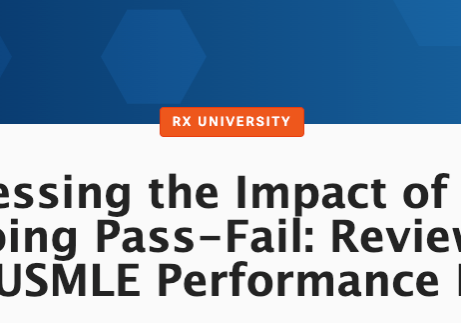By Patrick Sylvester
What’s in a score? Would that which we call Step 1,
by any other number, match as well?
Often discussed in private conversation and talked about ad nauseam on forums/blogs is the idea that one often starts the process of studying for the USMLE Step 1 with a particular target score in mind. This idea is usually formed by a general perception of what specialty a student is interested in as well as an expectation that that student has for himself based upon his or her prior academic performance.
Let’s be honest – there’s probably nothing wrong with that. Personally, I think the right attitude exists somewhere between “I have to get X score or else” and “Who cares?”
With that in mind, let’s take a look at some information provided by the NRMP* through their document “Charting Outcomes in the Match, 2011.”
But first, some basic statistics about the USMLE Step 1:
- The passing score for the USMLE Step 1 is now 192 (this was changed on January 1st, 2014).
- The mean score has been set at 227, with a standard deviation of 22.
From Charting Outcomes 2011, the scores of applicants to the match appear to fall into a normal distribution (eh, close enough) as shown in the following figure:
(Note that this data was obtained by adding the # of matched and unmatched applicants for both US Seniors and Independent applicants from the corresponding Step 1 ranges listed in each specialty).
Given this observation, this suggests percentile scores are as follows:
(Obtained from http://usmlegunner.blogspot.com/p/percentile-calculator.html)
Next, using a similar set of diagrams (one for US Seniors and another for Independent Applicants) we’ll plot points representing the mean USMLE score for matched applicants in each specialty. You’ll also note that each point (represented by a red dot) is aligned at a specific height on the Y-axis. This is meant to provide another level of stratification based upon the subjective importance of USMLE Step 1 as indicated by the 2012 NRMP Program Director’s Survey.
I apologize for the difficulty in parsing out specialties that are clustered together. Please see this link for similar data in tabular form.
Some interesting points from looking at this:
- As you might have expected, the more competitive the specialty, the higher the mean Step 1 score of matched applicants.
- On a similar note, from visual inspection (lazy statistical analysis), there seems to be a trend in which specialties with higher mean Step 1 scores of matched applicants tend to rate this metric higher than those specialties with lower mean Step 1 scores.
- Note that plastic surgery, with the highest mean Step 1 score of matched applicants, seems to be an outlier to this statement.
There are also a couple of disclaimers to be aware of:
- This data is nearly 3 years old at this point! As you might be aware, the landscape of the match continues to change from year to year (including # of applicants, specialty popularity, etc). Perhaps someday we’ll get updated data from the NRMP, but until then, you ought to take this with a grain of salt.
- Some things don’t make sense! For example, you might have noticed that the mean Step 1 score for matched independent applicants is often lower than that of US seniors for any given specialty. However, if you look at the % of matched applicants, you’ll find that this is significantly lower in independents as compared to US seniors. To me, this says that the addition of many other attributes (such as research, clinical grades, AOA membership, advanced degrees) will undoubtedly make analysis based upon any one variable challenging.
What am I trying to say? In the end, when you step back and look at the big picture, the presumed differences between specialties doesn’t seem too terribly daunting (at least to me). With that said, there’s no doubt that Step 1 is an important part in shaping your application for residency. Therefore it’s worth some serious thought as you begin to develop your plan and goals for studying. As long as you don’t let such thoughts consume you, it might help you stay motivated during the lonesome studying to come.
Go hence! Have no more talk of these sad things;
So much to study, and what anxious feelings
But never was such a worry, able to fade
Than that of Step 1 with the help of First Aid.
References
Results of the 2012 NRMP Program Director Survey
*Disclaimer: USMLERx and First Aid are not affiliated with the NRMP. All opinions expressed here are solely those of the author and not the NRMP.







